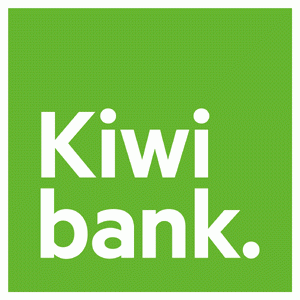
By Gareth Vaughan
Fitch Ratings has assigned a AAA credit rating to any covered bond issue from Kiwibank, which the credit rating agency says can issue covered bonds worth up to NZ$3 billion secured by residential mortgages.
A spokesman for Kiwibank told interest.co.nz the state owned bank had yet to issue covered bonds.
“The announcement from Fitch is part the process of establishing a covered bond programme for Kiwibank. We continue to monitor wholesale funding market opportunities across a range of markets, both domestically and offshore," the Kiwibank spokesman said.
Interest.co.nz reported last month that Kiwibank was ready to push the go button on its first covered bond issue.
Covered bonds are dual-recourse securities, issued for anywhere from three to 10 years, through which bondholders have both an unsecured claim on the issuing bank (should it default on the bonds) and hold a secured interest over a specific pool of assets - generally residential mortgages - called the cover pool. Covered bonds are different to senior unsecured debt instruments issued by banks, where the bondholder is simply an unsecured creditor of the bank, and also from mortgage-backed securities, where the bondholder has a secured interest in the cover pool but has no claim on the issuing bank.
Due to their dual recourse security, covered bonds generally attract the highest possible AAA credit rating (which is generally higher than the bank issuer's own ratings, Kiwibank's is AA) and are therefore a cheaper form of funding for banks than standard bank bonds.
New Zealand's big four banks, led by BNZ, have borrowed billions of dollars through covered bond issues, mainly to overseas institutional investors, since BNZ became the first to do so in 2010.
Fitch says Kiwibank's proposed cover pool for its covered bonds consists of 2,308 loans secured by first-ranking mortgages on residential properties with a total outstanding balance of NZ$315.8 million.
The Reserve Bank says banks may use up to 10% of their total assets as collateral for covered bonds. Kiwibank's total assets as of December 31 stood at NZ$15.232 billion. Based on that figure, it could use about NZ$1.52 billion worth as security for covered bonds.
Here's Fitch's full statement:
Fitch Ratings has assigned Kiwibank Limited's (Kiwibank, AA/'F1+') inaugural mortgage covered bonds, an expected 'AAA(EXP)' rating. The bonds are guaranteed by Kiwi Covered Bond Trustee Limited as trustee of the Kiwi Covered Bond Trust. Under this programme Kiwibank can periodically issue covered bonds up to NZD3bn secured on a dynamic pool of first-ranking New Zealand residential mortgage loans.
The expected rating is based on Kiwibank's Long-Term Issuer Default Rating (IDR) of 'AA' a Discontinuity Cap (D-Cap) of 2 (high), and the asset percentage (AP) of 88.4% that Fitch takes into account in its analysis.
While the contractual AP has not yet been confirmed, Fitch's breakeven AP to maintain the rating of 'AAA(EXP)' is 88.4% on a 'AA' probability of default basis, including recoveries that allow a two-notch uplift to achieve an 'AAA(EXP)' rating.
The final rating is contingent on the receipt of information on the initial cover pool and AP confirming to the information already received by Fitch.
Rating Sensitivities
The 'AAA(EXP)' rating would be vulnerable to a downgrade if the issuer's Long-Term IDR is downgraded by three or more notches or if the AP level Fitch takes into account in its analysis rises above the breakeven point of 88.4%.
Rating Drivers
The driver of the D-Cap is Fitch's assessment of high liquidity gap and systemic risk. This is principally driven by programme documentation which provides, in certain circumstances, for a six-month period, prior to a scheduled covered bond maturity, for cover pool asset sales. This compares with Fitch's assessment of the time required to sell cover pool assets in New Zealand at 12 months. The D-Cap of 2, when combined with Kiwibank's IDR, supports a 'AAA(EXP)' expected rating on the covered bonds.
Kiwibank's covered bond programme D-Cap and other component risk assessments are as follows:
D-Cap: 2 (high)
Asset segregation: very low
Liquidity gap and systemic risk: high
Cover pool-specific alternative management: low
Systemic alternative management: moderate
Privileged derivatives: moderate
As of 13 January 2013, the proposed cover pool consisted of 2,308 loans secured by first-ranking mortgages of New Zealand residential properties with a total outstanding balance of NZD315.8m. The portfolio is wholly made up of full documentation loans, which have a weighted average current loan-to-value ratio of 58.4%, and a weighted average seasoning of 36.6 months.
Floating-rate loans comprise 47.9% of the cover pool. In a 'AAA' scenario, Fitch has calculated a weighted average frequency of foreclosure for the cover assets of 7.5%, and a weighted average recovery rate of 54.4%. The cover pool is geographically distributed across New Zealand, with the largest concentrations being in Auckland (38.9%) and Wellington (20.1%). The agency's mortgage default analysis is based on its New Zealand residential mortgage criteria.
The Fitch breakeven AP in line with the covered bond rating will be affected, among others, by the profile of the cover assets relative to outstanding covered bonds, which can change over time, even in the absence of new issuance. Therefore it cannot be assumed to remain stable over time.
This article was first published in our email for paid subscribers. See here for more details and to subscribe.

We welcome your comments below. If you are not already registered, please register to comment
Remember we welcome robust, respectful and insightful debate. We don't welcome abusive or defamatory comments and will de-register those repeatedly making such comments. Our current comment policy is here.